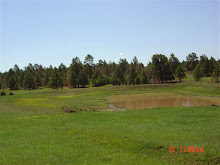Yale Environment 360: A Controversial Drilling Practice Hits Roadblock In New York City
25 Mar 2010: Report
A Controversial Drilling Practice
Hits Roadblock in New York City
Hydro fracturing is a profitable method of natural gas extraction that uses large quantities of water and chemicals to free gas from underground rock formations. But New York City’s concerns that the practice would threaten its water supply have slowed a juggernaut that has been sweeping across parts of the northeastern United States.
by bruce stutz
The highly productive method of natural gas extraction known as “hydro fracturing” has spread rapidly across the United States in recent years, opening up vast new reserves in Texas, Wyoming, Pennsylvania, and other states.
Last fall, however, the process — also known as “fracking” — ran headlong into opposition from New York City. And for now at least, stiff resistance from the city, which fears the contamination of its pristine water supply in upstate New York, seems to have slowed the momentum behind this highly touted — and highly controversial — drilling technique.
The city’s 90-page inventory of the possibly dire impacts of hydraulic fracturing has now become primary source material for a growing environmental backlash to the gas industry’s rapid assault on the huge gas-rich geological formation known as the Marcellus Shale, which underlies large portions of rural Pennsylvania, West Virginia, and New York State.
Acting in part on concerns raised by the New York City report, the U.S. Environmental Protection Agency (EPA) announced last week that it would
conduct a nationwide study to assess the environmental damage caused by hydro fracturing. The EPA’s larger conclusion — that the potential impacts of hydraulic fracturing on human health, the environment, water supply, water quality, wastewater treatment, air quality, and management of radioactive materials, “warrant further scientific and regulatory analysis” — was not one the industry wanted to hear.
The EPA study may well lead to tighter controls over this loosely regulated practice, and could impede the spread of hydro fracturing. The drilling method involves forcing a mixture of water, chemicals, and sand at high pressure down a well bore and into the dense surrounding rock. There, it creates small fractures that release the previously trapped reserves. The problem is, however, that the technique also uses large quantities of water — anywhere from 3 million to 8 million gallons per well — some third to half of which emerges from the fracking process tainted by numerous contaminants and chemicals. If that water isn’t properly stored and treated, it poses a risk to surface water, wells, and underground aquifers. More>>>






0 comments:
Post a Comment